Astronomers Can’t Agree On What Caused This Extreme Burst, And Literally ‘Have A Cow’

Our Universe is full of surprises. This latest one, AT2018cow, has ignited a controversy between astronomers.
The Universe is an ever-changing place, particularly if you look at it on long-enough timescales. While many objects in the night sky appear fixed, everything changes over time. Stars are born and die; galaxies form and merge; the Universe expands. Even on human timescales, many objects vary in brightness, flare up, or experience a catastrophic interaction.
The biggest, most rapid changes are known as transients: objects which appear or brighten seemingly out of nowhere, often by a factor of many billions. In 2018, astronomers identified a new type of transient that had extraordinarily strange characteristics: AT2018cow, discovered by the Asteroid Terrestrial-impact Last Alert System (ATLAS) telescopes. This robotic survey, designed to monitor the sky for potential Earth impactors, found something humanity had never witnessed before.
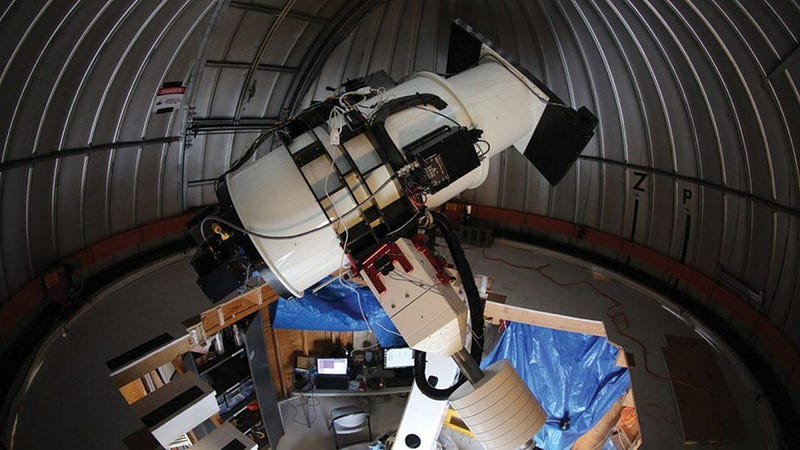
On June 16, 2018, astronomers saw an object in a relatively nearby galaxy just 200 million light-years away brighten tremendously, in a fashion that had never been seen. Galaxy CGCG 137–068, a faint spiral galaxy with a central bar, hosted a transient object that flared up about halfway to the galaxy’s edge, appearing along one of the spiral arms.
But it was as luminous as 100 billion Suns, making it at least 10 times as bright as a normal supernova. The matter leaving the vicinity was moving faster than matter moves even in the case of a supernova: about 10% the speed of light. It reached its peak brightness in less time — just 2 days — than other, similar events. And not only was it surrounded by extremely dense material, but it appeared to remain active for approximately 2 weeks. As the first object of its kind, it’s been the subject of intense scrutiny and study by astronomers.
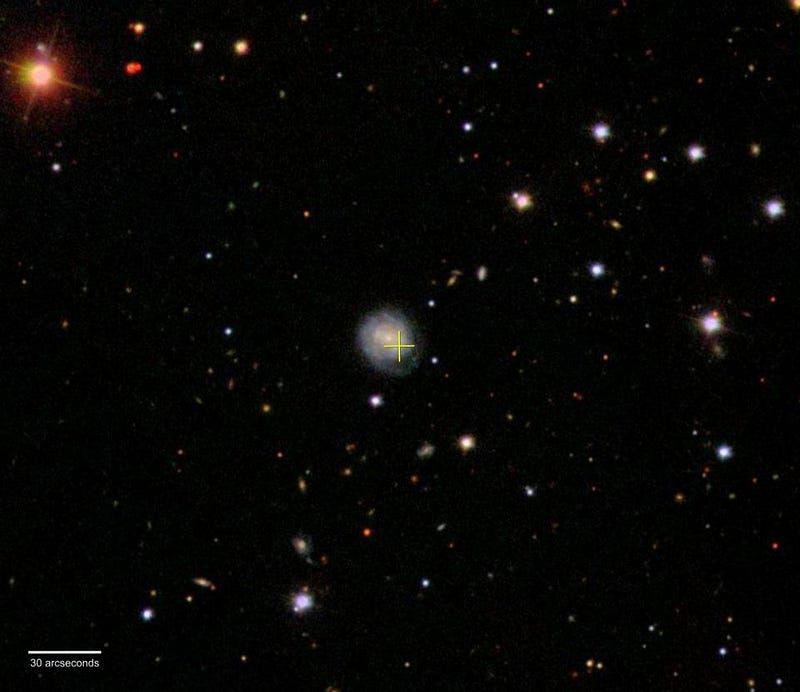
Pretty much everyone suspected that this was a supernova of some sort. But the extreme brightness of AT2018cow, accompanied by its unprecedentedly fast rise time, has thrown scientists into a maelstrom of controversy. When the conventional explanation of a run-of-the-mill supernova failed, astronomers began tweaking their models to try and explain its nature. As we enter 2019, we now have a leading model, and a competing alternative:
- Main model: a core-collapse supernova producing an energetic jet and with an active remnant.
- Competing alternative: a tidal-disruption event (TDE) caused by a white dwarf interacting with a black hole.
As we become more adept in covering the entire sky on a close-to-continuous basis, it becomes more and more important to try and understand how even bizarre, transient objects behave.
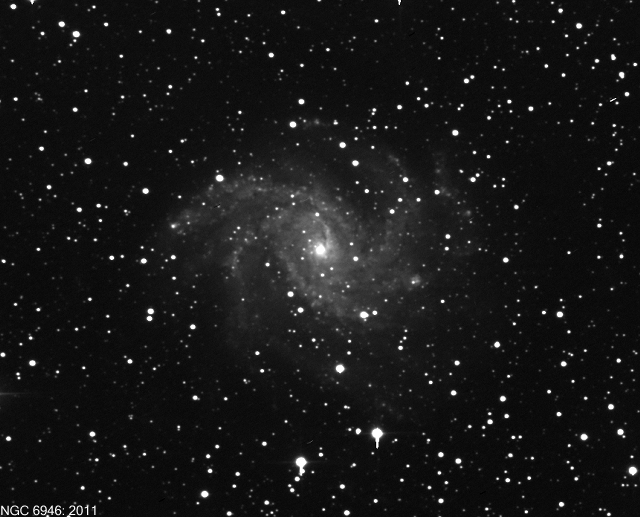
There’s a big network of telescopes around the world that watch transients happen: GROWTH (Global Relay of Observatories Watching Transients Happen). This global array of telescopes allows astronomers, once a transient object is identified, to collect continuous observations in multiple wavelengths, without taking a break. Because it’s so close and so bright, we were able to gather more data from this event than from other bright transients that were further away.
According to scientist Daniel Perley, “Whatever it is, AT2018cow is probably linked to the ‘fast blue optical transients’ from Pan-STARRS, Kepler, and other missions.” But it’s still a mystery.
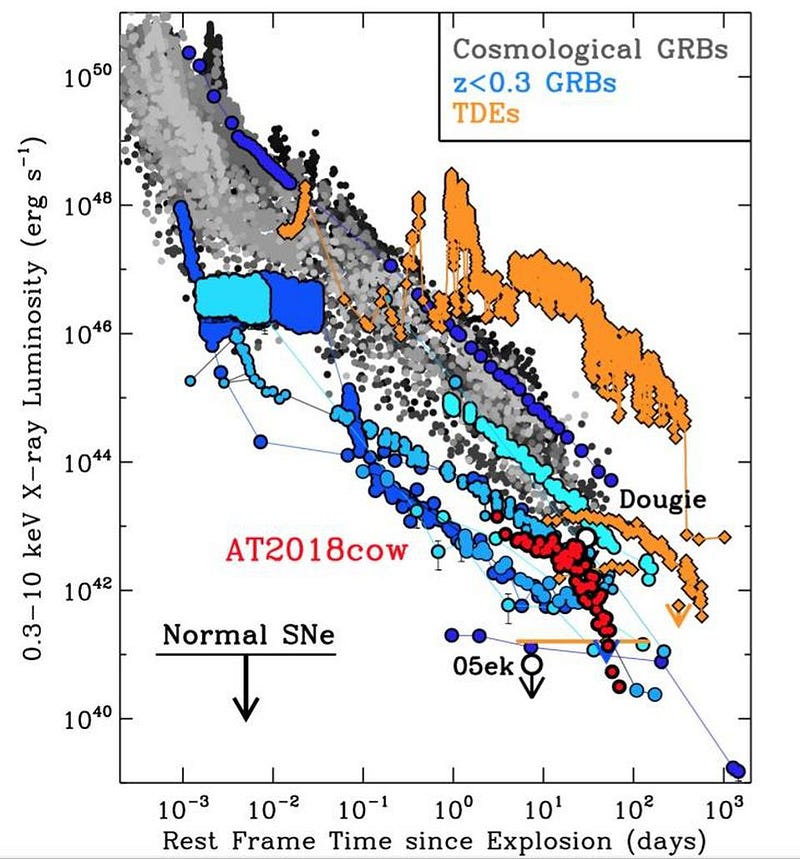
This spectral data showed the presence of only two elements: hydrogen and helium. The absence of the spectral signatures of other elements in any substantial abundance is enough to rule out a stripped-envelope supernova, where a star’s outer layers are siphoned off before the core collapses.
Once it achieved its peak brightness, it remained bright for a long time and remains blue (and therefore hot) even today. The inability of the transient to cool off makes it extremely weird.
And finally, there are periodic bumps and rises in the total amount of light from this transient, indicating that there’s a central, compact object behaving as an engine.
But the key to solving this mystery wouldn’t occur in the optical portion of the spectrum, but in the X-ray, courtesy of NASA’s Swift satellite.
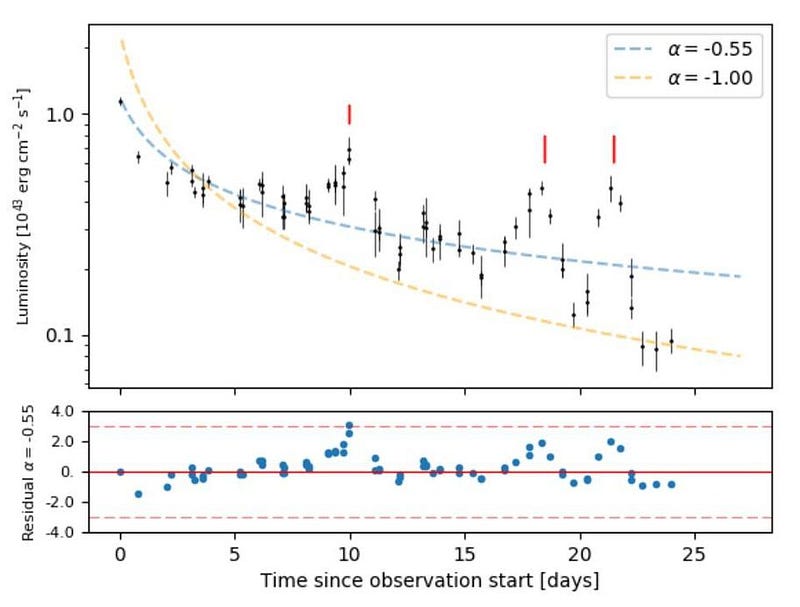
Beginning on June 19, just 3 days after AT2018cow was discovered, Swift observed and took both ultraviolet and X-ray data of this object. It was revealed it was extremely blue in color: brighter in the ultraviolet than the optical, and even brighter in X-rays. More importantly, spectral data was acquired, revealing an observational surprise: the X-ray spectrum was full of spikes.
In concert with the optical spectra, which supported a full-on core-collapse supernova, those X-ray spikes pointed to a specific scenario that could generate them: an interaction between the ejecta from the supernova and the material around the star. The low-energy X-rays remained constant, with a bump in higher-energy X-rays corresponding to another surprise: the presence of iron. Iron is a key element in core-collapse supernovae, which is why this is the leading theory of its origin.
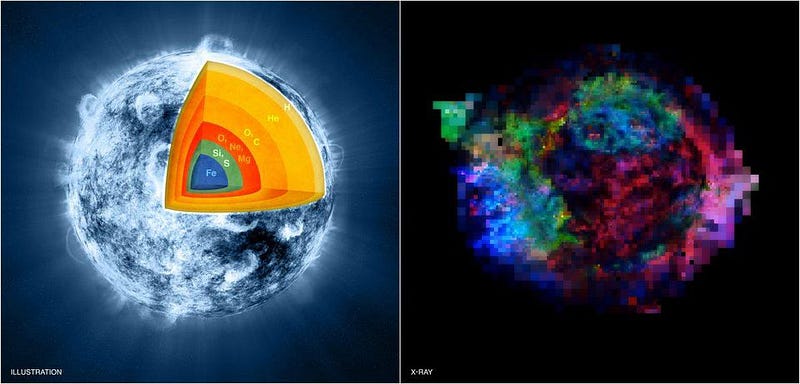
But an alternative scenario of a TDE is still viable. If a white dwarf — the stellar corpse of a Sun-like star — passes too close to a very concentrated object, like a black hole, its entire structure could be disrupted. This could result in a spectacular brightening, an extreme release of energy, and a runaway fusion reaction occurring. This scenario, put forth in a 2018 paper, was presented by scientist Amy Lien at January’s American Astronomical Society meeting in Seattle.
The TDE scenario has one big advantage over the core-collapse supernova scenario: it can explain the sustained blue color of AT2018cow, even as it cooled. TDEs, in general, don’t cool very fast, and the constant blue color that exhibits limited cooling fits very nicely with this explanation.
As Lien said at that meeting,
We think a tidal disruption created the quick, really unusual burst of light at the beginning of the event and best explains Swift’s multiwavelength observations as it faded over the next few months.
But that’s where the positives end. The remaining points in a TDE scenario all present tremendous difficulties.
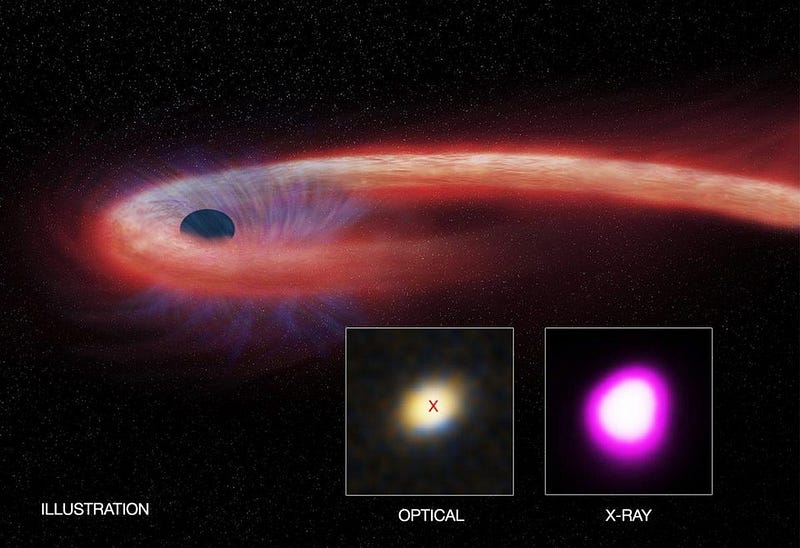
For one, this would have to be an extremely low-mass white dwarf: of 0.4 solar masses or less. The only way to create a white dwarf like this is by having a binary companion siphoning off the outer layers of a star, leaving only helium behind to condense into the collapsed object. But no companion was disrupted, or even detected in any way.
But hydrogen was also present, indicating that it would have to be an even rarer white dwarf: a helium dwarf with a hydrogen envelope. Only a few of these have ever been discovered.
The fact that the event occurred an estimated 5,500 light-years from the galactic center is also unusual, and indicates that it would have to be disrupted by an intermediate mass black hole, such as those theorized to be at the centers of globular clusters.
And finally, the only known TDEs that have iron in them at all, required for the X-ray spectra, must originate from having accreted material from other bodies. Iron, in both theory and practice, cannot be divorced from the other elements, but only hydrogen and helium were seen in the spectra of AT2018cow.

But AT2018cow was observed not only in the optical portion of the spectrum and at higher energies, but at lower energies, too. Using radio-wave observations in the millimeter portion of the spectrum, scientists saw a sharp rise in the flux coming from this transient. Most importantly, there wasn’t a single release of energy that faded, but multiple spikes and jumps were seen, indicating that there was energy being continuously produced.
The only way to have a sustained production of energy is to have an engine powering the event. A neutron star or black hole could do it, and those are produced by core-collapse supernovae; however, a TDE cannot. At the most energetic end of the X-ray spectrum, we also saw a spike (shaped like a hump in the spectra) of energetic photons, which are common around black holes. This feature would be much more difficult to explain with a TDE.
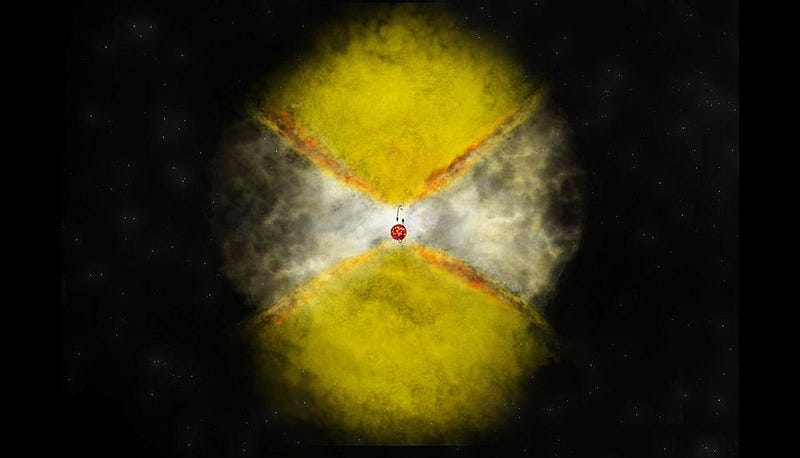
If the leading scenario is correct, this would mark the very first time that astronomers have witnessed the birth of a stellar engine resulting from the supernova of a pre-existing star. Although remnants of such core-collapse events, like neutron stars and black holes, have been seen before, we’ve never been able to detect their presence from the supernova event itself. The event AT2018cow, if it did originate from a supernova, may mark the very first time we’ve achieved such a detection.
Still, not everyone is convinced by the supernova explanation. Although its advocates are in the minority, and it takes a quite contrived scenario to get there, tidal disruption events are real, and the right configuration could create something extremely similar to an unusual, cocooned core-collapse supernova. As always, it will take more events like this, observed with high precision, to understand what’s truly at play in our Universe.
Ethan Siegel is the author of Beyond the Galaxy and Treknology. You can pre-order his third book, currently in development: the Encyclopaedia Cosmologica.





